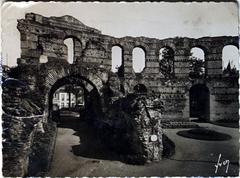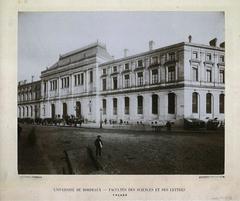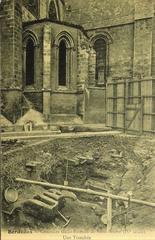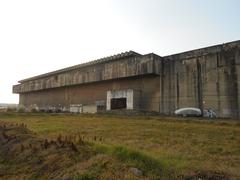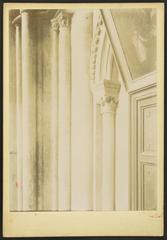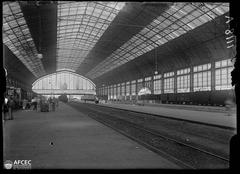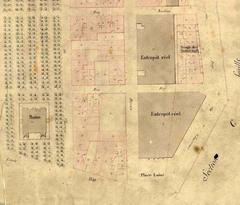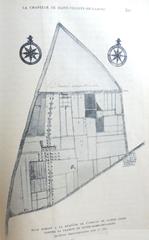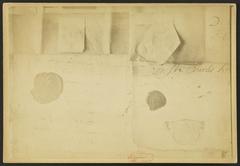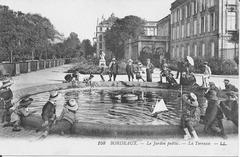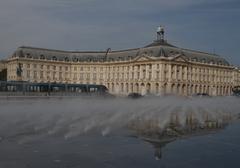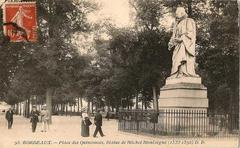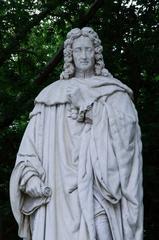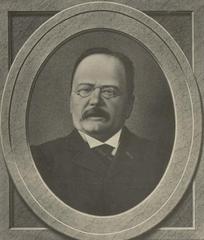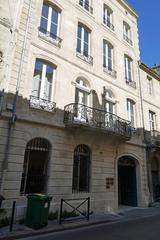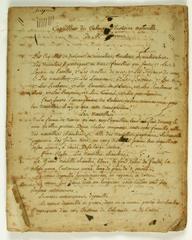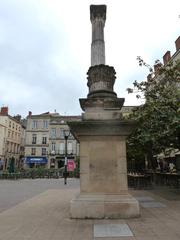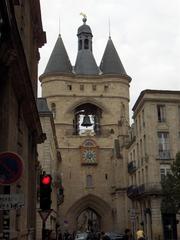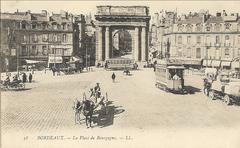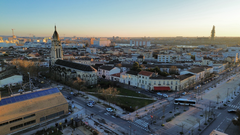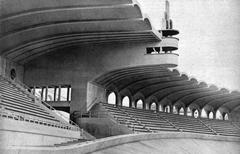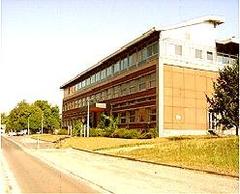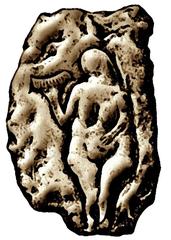
Passerelle Eiffel Bordeaux: Visiting Hours, Tickets, and Travel Guide
Date: 04/07/2025
Introduction
The Passerelle Eiffel, also known as the Passerelle Saint-Jean, is an iconic 19th-century wrought iron bridge spanning the Garonne River in Bordeaux, France. Completed between 1858 and 1860 as one of Gustave Eiffel’s earliest major engineering assignments, it exemplifies the innovation and ambition that propelled Bordeaux into a key transportation hub during the industrial era. Though no longer in use as a railway bridge and currently closed to public crossing, the Passerelle Eiffel remains a cherished Monument Historique, captivating visitors with its elegant lattice design, engineering legacy, and scenic riverside setting. This comprehensive guide explores its history, technical achievements, practical visitor information, and tips for experiencing Bordeaux’s industrial heritage.
For the latest updates, travelers are encouraged to consult official resources and consider local guided tours or cultural apps such as Audiala (evendo.com; wikimonde.com; abelard.org; bougerabordeaux.com).
Table of Contents
- Introduction
- Historical Background
- Architectural and Engineering Significance
- Visiting Passerelle Eiffel: Essential Information
- Travel Tips and FAQs
- Conclusion
- References
Historical Background
Origins and Conception
In mid-19th century Bordeaux, growing railway demand highlighted the need for a direct rail crossing over the Garonne. The Passerelle Eiffel project was initiated in 1858 to connect the Compagnie des Chemins de Fer du Midi and the Compagnie du Chemin de Fer de Paris à Orléans, ending the cumbersome transfer of cargo and passengers via ferry or the older Pont de Pierre (evendo.com).
Stanislas de Laroche-Tolay and Paul Régnauld led the design, with the construction contract awarded to the young Gustave Eiffel’s firm. At only 26, Eiffel was tasked with overseeing execution, procurement, and onsite management (wikimonde.com; lefigaro.fr).
Construction and Technical Innovations
Work commenced in September 1858 and concluded by August 1860. The bridge was inaugurated on August 25, 1860, and opened to rail traffic soon after. Spanning over 500 meters with six masonry piers and two abutments, the bridge employed ground-breaking techniques such as puddled iron plates, lattice truss construction, and modular assembly (wikimonde.com; evendo.com).
Its foundations utilized the Triger process (compressed air caissons), a technological leap that enabled stable construction in the Garonne’s challenging currents. Many innovations here paved the way for Eiffel’s subsequent triumphs, including the Eiffel Tower and Garabit Viaduct (wikimonde.com).
Impact on Bordeaux
Equipped initially with two railway tracks, the Passerelle Eiffel became a vital north-south rail corridor, accelerating Bordeaux’s emergence as a transportation nexus. A pedestrian walkway added in 1862 (removed in 1981) offered public access and panoramic views (freewalkingtoursbordeaux.com; wikimonde.com).
Gustave Eiffel’s Role
While not the bridge’s designer, Eiffel’s leadership in execution, logistics, and problem-solving established his reputation. Anecdotes from the construction site, including Eiffel rescuing a worker from the river, highlight his commitment and ingenuity (gustaveeiffel.com; evendo.com).
Decline and Preservation
By the late 20th century, the bridge’s limited capacity and speed restrictions (30 km/h) rendered it obsolete. The opening of a modern four-track bridge in 2008 ended its railway function, with the last train crossing in May that year (wikimonde.com; lefigaro.fr).
Intense advocacy from heritage groups, Eiffel’s descendants, and cultural authorities prevented demolition. In 2010, the Passerelle Eiffel was classified as a Monument Historique, ensuring its protection (gustaveeiffel.com; wikimonde.com).
Recent Developments
Though closed for crossing, the bridge remains an evocative riverside landmark. Maintenance, repainting, and artistic lighting projects have highlighted its structure during city events and festivals. It is frequently featured in exhibitions and cultural celebrations honoring Eiffel’s legacy (wikimonde.com; lefigaro.fr).
Architectural and Engineering Significance
Structural Specifications
- Length: 509.69 meters
- Width: 8.60 meters
- Material: Wrought iron (puddled iron), a cutting-edge material at the time
- Configuration: Two railway tracks (original), pedestrian walkway added in 1862
- Support System: Six masonry piers and two abutments anchored in the Garonne
Engineering Advances
- Lattice Truss Design: The repeating geometric trusses provided both strength and elegance, a precursor to Eiffel’s later works.
- Modular Construction: Prefabricated components enabled efficient assembly and high construction quality.
- Foundations: The Triger compressed air caisson method allowed for secure placement in challenging river conditions.
(abelard.org; bougerabordeaux.com)
Aesthetic Value
Beyond its practical function, the Passerelle Eiffel’s slender trusses and rhythmic patterns create a visually striking presence. Writer François Mauriac dubbed it “the magic entrance to Bordeaux,” reflecting its symbolic status as a gateway and marvel of modernity.
Legacy and Influence
Techniques pioneered here influenced countless later projects, including the Eiffel Tower and Garabit Viaduct. The bridge stands as a crucial milestone in the evolution of metal bridge engineering.
Heritage Status and Technical Challenges
Classified as a Monument Historique in 2010, the bridge faces ongoing corrosion and structural fatigue. Restoration or adaptive reuse would require significant reinforcement, ramp reconstruction, and compliance with modern safety standards—a challenge for city and heritage planners (bougerabordeaux.com).
Visiting Passerelle Eiffel: Essential Information
Hours, Tickets, and Access
- Bridge Access: The Passerelle Eiffel is currently closed to public crossing for safety and preservation.
- Viewing: The bridge can be admired year-round from riverside promenades such as Quai de Paludate, Quai de Brienne, and Pont Saint-Jean.
- Tickets: There is no ticketing system; viewing from public spaces is free.
Accessibility
- Wheelchair Access: Riverfront promenades near the bridge are wheelchair-friendly.
- Safety: For your safety and the bridge’s preservation, do not attempt to access fenced-off areas.
Getting There
- By Train: Bordeaux Saint-Jean station is a short walk away.
- By Tram: Lines C and D, stop at Gare Saint-Jean.
- By Bike/On Foot: Extensive riverside paths make for easy cycling and walking access.
- By Car: Parking is available near the station but may be limited at peak times.
Viewing Points and Photography
- Best Angles: Quai de Paludate, Quai de Brienne, and Pont Saint-Jean offer the best views.
- Lighting: Sunrise and sunset provide dramatic illumination; special artistic lighting is used during city events.
- Photo Tips: Use alt tags like “Passerelle Eiffel Bordeaux historical bridge” for online sharing and SEO.
Nearby Attractions
- Gare Saint-Jean: Historic railway station.
- Pont de Pierre: 19th-century stone bridge.
- La Cité du Vin: Contemporary wine museum.
- Quais de Bordeaux: Vibrant riverfront promenade.
- Pont Simone Veil: Modern pedestrian and cycle bridge completed in 2024.
(Lonely Planet; voirenimages.net)
Tours and Events
Bordeaux heritage tours often feature the Passerelle Eiffel as a highlight, providing historical context from the riverbanks. During city festivals like Dansons sur les quais and L’Été Métropolitain, the bridge serves as a dramatic illuminated backdrop for cultural events.
Travel Tips and FAQs
Practical Tips
- Best Time to Visit: Spring and autumn for mild weather; summer is lively but busy (Lonely Planet).
- Safety: Be mindful of pickpockets near the train station (happytowander.com).
- Amenities: Restrooms and food can be found at Gare Saint-Jean and nearby cafés.
- Accessibility: Riverfront promenades are accessible for wheelchairs and strollers.
Frequently Asked Questions
Q: Can I walk across the Passerelle Eiffel?
A: No, the bridge is closed for crossing.
Q: Are tickets required?
A: No, viewing from public areas is free.
Q: Where are the best photo spots?
A: Quai de Paludate, Quai de Brienne, and Pont Saint-Jean.
Q: Are guided tours available?
A: Yes, local walking tours often include the bridge in their itineraries.
Q: Is the area wheelchair accessible?
A: Yes, surrounding promenades are accessible.
Conclusion
The Passerelle Eiffel is a masterwork of 19th-century engineering, emblematic of Gustave Eiffel’s early career and Bordeaux’s industrial heritage. While the bridge is closed to pedestrian use, its elegant silhouette, historical resonance, and picturesque riverside location make it a must-see landmark. Visitors can enjoy panoramic views, engage with the city’s broader architectural treasures, and deepen their appreciation through guided tours and multimedia resources. Ongoing preservation efforts and community engagement promise to keep the Passerelle Eiffel’s legacy alive for generations.
For the latest updates, special events, and expert-guided experiences, download the Audiala app and explore additional resources on Bordeaux’s historical sites.
References
- evendo.com
- wikimonde.com
- abelard.org
- bougerabordeaux.com
- lefigaro.fr
- gustaveeiffel.com
- freewalkingtoursbordeaux.com
- voirenimages.net
- Lonely Planet
- Happy to Wander
- Travel Drafts














